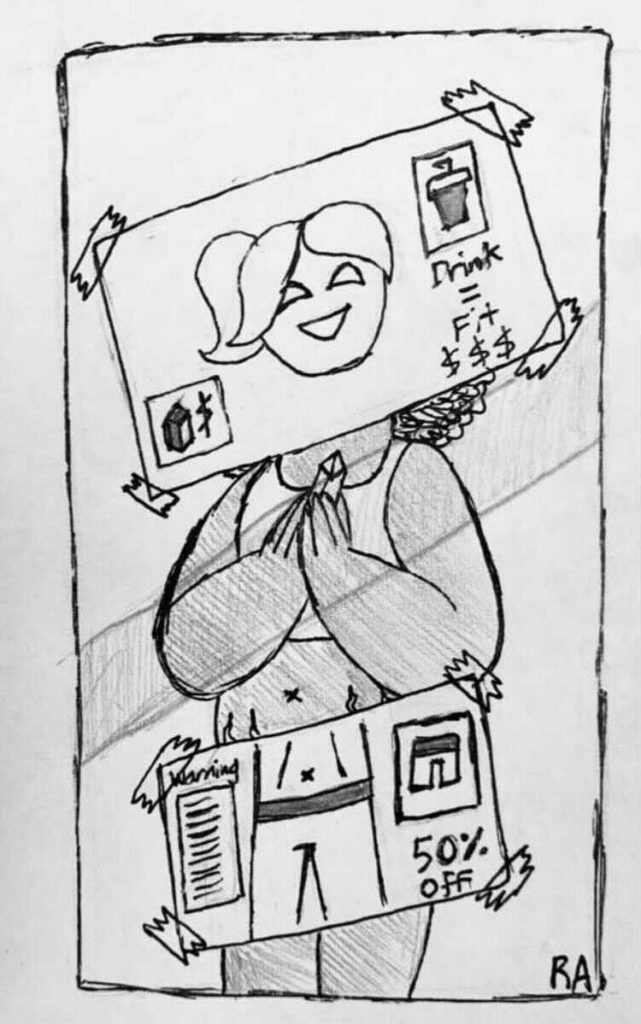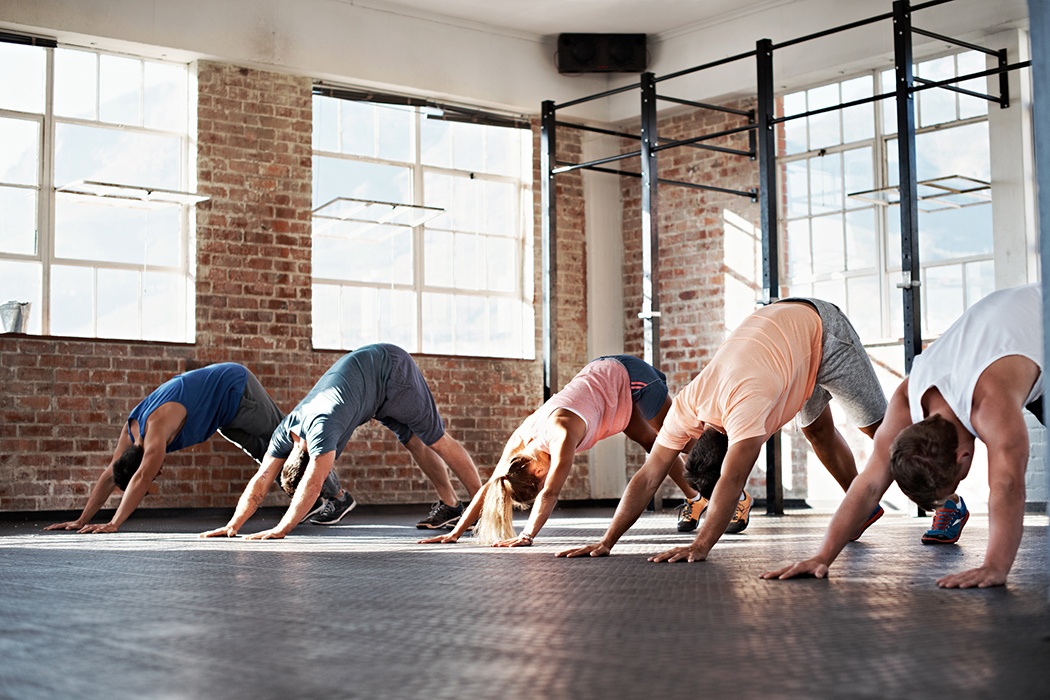Image provided by ISTOCK/KUPICOO.
A new smoothie diet. Different yoga classes at the gym. Crystals that claim to improve your digestion. Everywhere we look, we’re surrounded by the idea of “wellness.” Our ideas of wellness have become unrealistic goals, part of a mindset where we are constantly obsessed with our health and what we can do to improve it. But while wellness has become increasingly popular in today’s society, it’s not a new fad. The term “wellness” was popularized in the 1950s by Dr. Halbert L. Dunn, one of the early proponents of the phenomenon now known as wellness culture.
Wellness culture is many things, but at its core, it’s the toxic belief that our bodies can’t self-regulate and that to be well we have to constantly chase the next diet, exercise routine, etc. Skincare, vitamins, and yoga mats are examples of the products that are common in this culture. But wellness culture also extends to pseudoscientific, expensive products such as crystals and over-promising supplements. Wellness culture offers us countless ways to “improve” ourselves, many unproven and harmful. The image of wellness we think of today is most often a skinny, young, white woman who conforms to Eurocentric beauty standards. She has the perfect nose shape, hair, and skin, but simultaneously has great self-confidence and mental health.
Of course, this goal is utterly unrealistic and damaging to so many people. Aside from its subtle racism, an obsession with an unhealthy concept of wellness leads to perfectionism. Wellness culture is usually a synonym for thinness, and the standards people compare themselves to are constantly changing. We strive to be flawless, and when we aren’t, we get deeply angry and sad that we can’t live up to our expectations. Wellness culture has deeply hurt many women’s sense of body image, and in men, it’s responsible for a painful, “masculine” form of wellness that usually does more harm than good. From meat-only diets to “no pain, no gain” supplement/surgery treatments, this hypermasculinization of wellness makes risky options seem reasonable to many men. Such self-blame and criticism most often lead to extreme behaviors, like vomiting after eating a meal to make yourself skinnier or going to the gym directly after eating some cake. Choosing a crazy diet, like only grapefruits or not eating any carbs, can actually end up hurting people in the long run. These feelings of failure over not being able to fit the mold of wellness we picture in our heads make it easier for some to turn to pseudoscientific methods to improve themselves, such as vibrations and crystals. Botox and plastic surgery may not be options directly advertised by wellness culture, but it is hard to say that the body dysmorphia and self-hatred caused by wellness culture do not indirectly lead to such extreme options.

Original art by Raven Arroyo.
Wellness is a rapidly growing $1.5 trillion industry, so it’s not surprising that no matter what problem we want to fix, we have a vast selection of products to help us do so. But it’s not just regular consumers wanting to fix common ailments such as acne anymore. As a part of wellness culture, companies themselves create insecurities by marketing idealized portraits of wellness to us. Many, if not all, of the pictures used by these companies are digitally altered or modified in some way. Because we see billboards or video ads from these companies everywhere we go, they can literally shift our perceptions of wellness in a matter of minutes, days, or months. Lululemon advertises flawless pictures of women exercising, showing that not only should you be constantly exercising, but you should look great while doing it.
Of course, none of this would be possible without social media, which has truly allowed wellness culture to thrive and permeate our day-to-day lives. The current fad of self-care on Instagram, for example, is just another iteration of wellness culture-like products that a lot of times, don’t do anything. Jade rollers, ab stimulators, and sound therapy are all items commonly seen online. Celebrity endorsements of wellness culture make this problem even worse. Many people, especially children, see these influencers as role models. They immediately compare themselves to these celebrities, unaware that the reason they look the way they do could be because of costly specialists, treatments, or surgical options. They think to themselves that if they purchase the product this celebrity is advertising, their body and overall life will more closely resemble the celebrity’s.
Wellness is all around us, and in moderation, it can be used to build a healthy lifestyle. However, when our obsession with constantly improving our health turns harmful, wellness culture just makes us sick. It’s important to recognize and think about the expectations of wellness we are all personally chasing, and how accurate and realistic those expectations actually are. Worsened by businesses, celebrities, and social media platforms capitalizing on wellness culture, it is more important than ever to understand the external factors affecting our ideas of wellness. With this, we can understand what wellness uniquely means for each of us and how we can go about achieving that vision responsibly.
Huskies in the Halls
What do you think about wellness culture?

Sharanya Gattapally, Freshman
I have never personally experienced wellness culture, but, I have seen how people believe in crystals and astrology. I think if people really believe in it, maybe it actually helps them.

Peter Kaur, Sophomore
Wellness culture is a lifestyle centered around health and spirituality. Although the idea is great, the implementation is really bad.

Khant Hein, Junior
I think that it’s under and overrated. People think that if you go on extreme diets, oh it’s gonna work! It really doesn’t. I think just be normal, take care of yourself properly, and don’t do stupid stuff.

Isabela Greiner, Senior
There are different types of wellness. There is stuff like Goop, or psychics which prey on grieving people and take advantage of them. But the idea of emotional wellness and trying to understand your feelings, that is totally valid and real.

Helen Zou, Librarian
I think it’s important to be able to distinguish between the thing itself (taking care of yourself = good) from what a thing becomes after it’s inevitably commodified and turned into an Instagram-friendly “lifestyle brand” anyone can purchase for $9.99 at Urban Outfitters. In general, be wary of people who promise too much—there aren’t any shortcuts.

